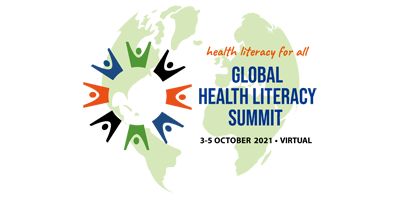Abstract Preview
Abstract
|
Title Measuring youth health literacy in Norway during the COVID-19 pandemic |
|
Type Oral Presentation Only |
|
Theme Global Health Literacy Summit 2021 |
|
Topic Health literacy in adolescence |
Authors
|
Main Author Christopher Le1 3 |
|
Presenting Author Christopher Le1 3 |
|
Co-Author Øystein Guttersrud2 4 Kjell Sverre Pettersen2 Hanne Søberg Finbråten1 2 |
Authors' Institution
|
Department / Institution / Country Department of Health and Nursing Sciences / Inland Norway University of Applied Sciences / Norway (Norge)1 Department of Nursing and Health Promotion / Oslo Metropolitan University - OsloMet / Norway (Norge)2 Division of Prevention and Public Health / Norwegian Directorate of Health / Norway (Norge)3 The Norwegian Centre for Science Education / University of Oslo / Norway (Norge)4 |
|
Abstract Content (abstracts should be written in Size 11 font, Arial font style) Introduction: During adolescence health-promoting attitudes, beliefs and behaviours are formed. It is also expected that young individuals take an increasing responsibility for own health. Health literacy (HL) in terms of ability to access, understand, appraise, and use reliable health information is crucial to being able to participate actively and take responsibility for one’s own health. Hence, investing in youth health literacy (YHL) is essential, as may positively affect their health and well-being. Despite growing number of publications in recent years, YHL is still under-researched. The aim of the study was therefore to examine health literacy in young individuals. Methods: This cross-sectional study is based on data from n=801 youths aged 16-24. The HLS19 measurement instruments were used to map HL in the current sample, and data were collected using computer-assisted telephone interviews. Estimated Rasch based proficiency and standard error corresponding to the measurement scale's sum score were used to define HL levels. Descriptive statistics were performed to report on single items, whereas inferential statistics were used to investigate associations between HL and various independent variables. Results: The preliminary results suggest three levels of HL (3, 2, 1 or below 1) in which 36% scored at level one or below, as measured by HLS19-Q12-NO_Norwegian. These individuals might typically struggle e.g. to judge if the information on health risks in the mass media is reliable and to find information on how to handle mental health problems. Among others, 40% found it (very) difficult to find information on how to handle mental health problems. Youths being financial deprived or having long-term illness were found to have lower HL than others. Conclusions: Many youths may lack key knowledge and skills to make choices and actively take part in decisions concerning their own health. Identified significantly different HL levels and trends within specific contexts will be of great importance for future policy formulation and health practice. |
|
Other Topics Preferences(Maximum of two topics only and please note that the Program Committee reserves the right to decide on the final presentation format.) Health literacy in adolescence |
Requires Audio or Video system for Presentation?: No
